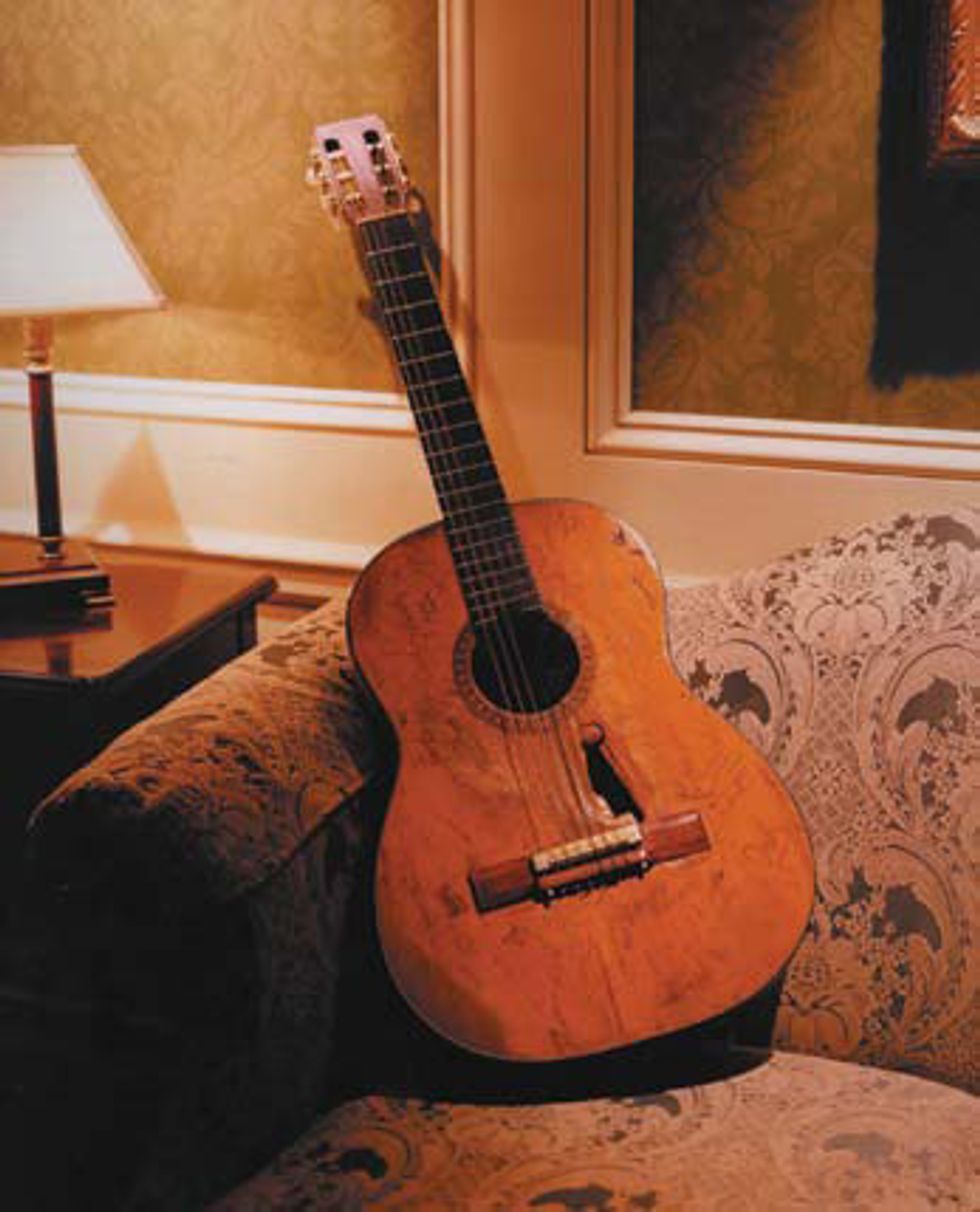Examining how a guitar becomes more than a guitar as it collects experiences and emotions.
Many religions subscribe to the belief that only humans have souls. I don’t believe that for a second. Look into the eyes of any living being, and you will see the definite presence of hyper-awareness, consciousness and struggle. I’ll go much further to suggest that plants and trees, though perhaps not aware, are striving and struggling in their environments. Most simply, they are living and breathing entities.
When a tree dies, either naturally, by lightening, or felled by a saw, the trunk provides us with the precious wood inside, which for all practical purposes captures a perfect record of the tree’s history. A close examination of the annual rings can tell the exact weather patterns of the region in which it grew. The grain can reveal the exact location and trajectory of every branch—whether the tree leaned or thrived or competed with other trees. Even the complex chemistry of the soil is contained within. Such randomness produces great beauty.
 George Nakashima |
Another of my favorite books is Zen and the Art of Motorcycle Maintenance by Robert M. Pirsig. While traveling with, working on and caring for his motorcycle, he gradually discovers that quality is the external manifestation of care.
As far as I’m concerned, any object that is created with human time and care, or any object into which human time and care is imparted, absorbs, embodies and contains something very special. More than most objects, wooden musical instruments such as guitars and violins fall into this category. Of course, a piece of furniture can be very special in its design and function, but musical instruments go well beyond mere chairs and tables. They are carefully manipulated in the capable hands of their makers to become the artistic tools of the musician. Certainly, each artisan imparts his or her soul into every instrument they craft, albeit some more than others, depending upon the specific amount of care taken. And certainly musicians impart their souls into their instruments through the music that they apply or extract.
 Willie Nelson's Trigger |
An often-heard argument among guitarists has to do with “machine-made” vs. “handcrafted.” A luthier might painstakingly create a lovely instrument that will sell for $15,000, whittling every brace by hand, carving the neck contours with a spokeshave, hammering and honing each fret, rubbing multiple coats of thin finish with French polish, spending months before it’s ready to be strung. If that original instrument is now precisely measured and digitized, and every part is exactly replicated using computer-aided routers so that an efficient, assembly-line replica that will sell for $3000 is in every respect identical to the original in both dimension and appearance (as well as tone), is there a difference between the two guitars?
I say there is a difference, that the handcrafted instrument has the invisible quality of human care imbedded in all of its seams. But what can we say of value? Is it our responsibility as makers or manufacturers to deliver affordability and value for the dollar? I say yes to that too! No one wants to be charged for someone else’s inefficiency. It would seem that a reasonable compromise is the marriage of technology with hand-craftsmanship—to let the machines produce the raw parts efficiently and let human hands impart the critical care and attention to detail during assembly.
Isn’t it remarkable that a well-made guitar can be purchased, played, scratched and dented for decades and actually increase in value as it becomes “vintage?” That can’t be said for many products. By themselves, trees cannot speak, but when one does fall, what does the wood wish to become? Listen carefully. You can hear the soulful answer in the tone of your guitar!
dick boak
Prior to, and during the course of, his 33-year career with C. F. Martin & Co., dick boak (small letters!) has been a vagabond, communal architect, illustrator, art teacher, geodesic dome builder, lathe turner, luthier, draftsman, poet, guitarist, wood expert, author, desktop publisher, singer/songwriter, apple computer geek, archivist and publisher. By the time you finish reading this paragraph, he will most likely have morphed into something else.

